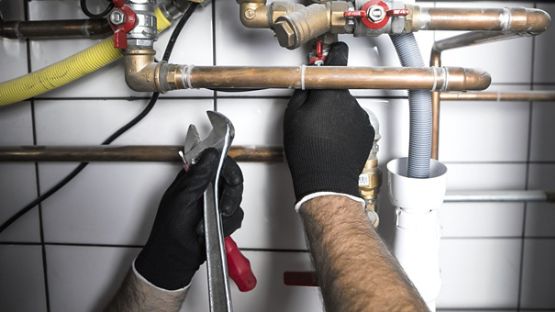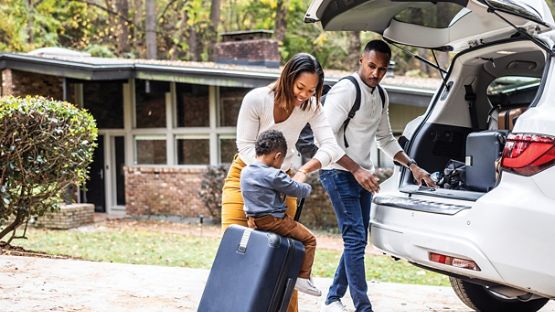Disasters can happen anywhere and at any time. If you need to evacuate your home, you may have mere minutes to gather your family and leave. There’s no avoiding stress in these situations, but planning will help you stay calm and collected. It may even save lives.
Key takeaways:
- When local authorities issue an emergency evacuation, you should act immediately. Listen to the Weather Network, CBC or local radio or TV stations for evacuation instructions.
- Compile a list of emergency contacts and key information on how each family member can reach each other.
- Identify safe exits from your home and establish meeting points. Assemble an emergency kit with essential supplies and important documents.
- Conduct regular evacuation drills to ensure everyone understands the plan and can execute it quickly. Assign specific roles to family members during drills to streamline the process.
What is a family emergency plan?
A family emergency plan is a structured strategy that outlines how your family will respond to various types of emergencies or disasters. It usually includes:
- Communication plan: A strategy for how every family member can reach each other. Choose an out-of-area emergency contact person; it may be easier to text or call long distance if local phone lines are overloaded or out of service.
- Emergency contacts: A handy list of key contact information (email and phone) for the family doctor, local authorities (police, fire department, hospitals), utility companies and insurance providers, plus extended friends and family.
- Evacuation plan: A plan for how to exit your home and street safely should an emergency arise. This includes details of a meeting point outside the home where your loved ones can gather if evacuated.
- Emergency kit: Supplies such as water, non-perishable food, flashlight, batteries, first aid supplies, medications and important documents. This could also include chargers and cords to ensure devices remain operational.
- Location of important utilities: Know the location of your fire extinguisher, water valve, electrical panel, gas valve and floor drain.
- Special considerations for those who require extra help (including pets): Consider any special needs of family members, such as medical conditions, disabilities or dietary restrictions. This includes planning for pets and their needs during an emergency.
7 steps to create an effective emergency evacuation plan
If disaster strikes, you may need to leave your home. This can be an extremely stressful situation, but the most important thing is to ensure everybody gets out safely and there’s a safe reunion on the other side. Without a plan, everybody can go into panic mode, which can mean chaos, stress and even injury or loss of life. Having an evacuation plan in place, and practicing it regularly, can help ensure that it never comes to that.
Let’s look at how to develop your emergency evacuation plan, step-by-step.
1. Draw a floor plan of your home and identify safe exits
When there’s an emergency, your normal exit routes might be blocked, so you might have to think about evacuation routes a little more creatively. First, draw up a detailed floor plan of each level of your home. Then:
- Identify all possible exits from each room. These can include doors and windows (at least two per room).
- Designate a main and alternate exit route.
2. Identify where you can go in the event of an evacuation
Once everybody gets out safe and sound, you want to make sure the family reunites, and nobody is lost and wandering alone. Having an established designation spot will take the guesswork out of that.
Try to have more than one option: One local and one a little farther away in case the emergency is larger in scale (like a wildfire). Suggestions include the home of a friend or family member in another town, a hotel or a shelter. Every family member should have the phone numbers and addresses of these locations handy.
Map out your primary and backup routes in case roads are blocked and have a physical map of the area available in case GPS satellite transmissions are down or your devices run out of power.
Write down all evacuation plans, along with important addresses and phone numbers, and give them to each family member. You can laminate a copy for family members to keep in their wallets. Although cell services may be interrupted, securely uploading this documentation to the cloud will mean a backup is accessible.
3. Plan how to evacuate vulnerable family members and pets
If you have family members who are vulnerable or have special needs like babies, children and any elderly or disabled relatives, plan for their safe exit too. If anybody has functional needs (mobility devices or other health equipment), consider whether that can be taken or whether there’s a backup solution outside the house.
Helping evacuate pets should also be a consideration in your plan. Ensure your pets have up-to-date identification tags with your current contact information and make sure leashes and harnesses are readily accessible.
4. Pack a ‘go bag’
In the event of an emergency evacuation, a "go bag" is a bag that contains survival supplies.
Remember to check these items or replace them by having a calendar entry every six months as part of your emergency preparedness plan. Here are some items to consider:
- Prescriptions and other medicines
- First aid kit (for humans and pets, if applicable)
- Personal hygiene items
- Bottled water
- Flashlight, battery-powered radio and extra batteries
- Clothing and bedding (sleeping bags, pillows)
- Special equipment for infants or elderly or disabled family members
- "Comfort items," such as special toys for children
- Phone, computer hard drive and laptop as well as chargers
- Pet food and other items for pets (medications, leashes)
- Copies of important documents (legal ID, passports, etc.)
5. Put together a home inventory list
Once the immediate danger has passed, a home inventory list will be a crucial document if you need to navigate insurance claims. If possible, keep a file on a cloud service with photos and descriptions of items such as age, cost, material and significance to you.
Learn more about how to create a home inventory here. Here are the benefits of doing this:
- Helps ensure that you have purchased enough insurance to replace your personal possessions
- Speeds up the insurance claims process, if necessary
- Substantiates any losses for income tax purposes
6. Keep important documents and information in a safe place
In addition to your home inventory, consider keeping important documents and information (including photocopies) in a safe place, such as a fire- and waterproof safe or uploaded to an encrypted cloud service. Another option is to save them on an encrypted flash drive in your “go bag” or at a friend's home.
Here are some of the important documents and information to have on hand or saved:
- Prescriptions
- Birth and marriage certificates
- Passports
- Driver's licence or personal identification
- Social Security cards
- Insurance policies— homeowners, auto, life and any others
- Recent tax returns
- Employment information
- Wills and deeds
- Stocks, bonds and other negotiable certificates
- Financial information such as bank, savings and retirement account numbers and recent tax returns
7. Practice makes perfect: Test your evacuation plan
To ensure you and your family are fully prepared for a sudden evacuation, do a safety drill regularly to simulate an emergency. Give yourself 10 minutes to get your family and belongings into the car and on the road to safety. All family members should take part and understand the plan properly.
By planning ahead for emergencies and practicing, you should be able to gather your family members and pets calmly and efficiently, with a minimum of stress and confusion.
Other best practices to prepare for emergencies
Taking time to make a family emergency preparedness plan will give you and your family peace of mind. Other best practices include:
- Maintain smoke and carbon monoxide detectors: You should regularly check that your smoke detectors are working properly. This includes scheduling a regular carbon monoxide and fire alarm battery change (a good time is when daylight savings time comes into effect).
- Know your utility shut-offs: Learn how to turn off your home's gas, electricity and water. Make sure all family members know where the shut-off valves and switches are located.
- Learn how to use fire extinguishers: Make sure each family knows where the fire extinguisher is located, and how to use it.
- First aid training: Take a first aid and CPR course. Ensure all family members know basic first aid procedures.
- Document medical needs: Maintain an up-to-date list of medications, dosages and medical conditions for each family member and any other information (blood type, etc.).
- Learn about your community resources: Familiarize yourself with local emergency resources, such as shelters, food banks and community centres.
By following these best practices, you can enhance your family's preparedness for a wide range of emergencies, ensuring that you can respond effectively and recover more quickly.













